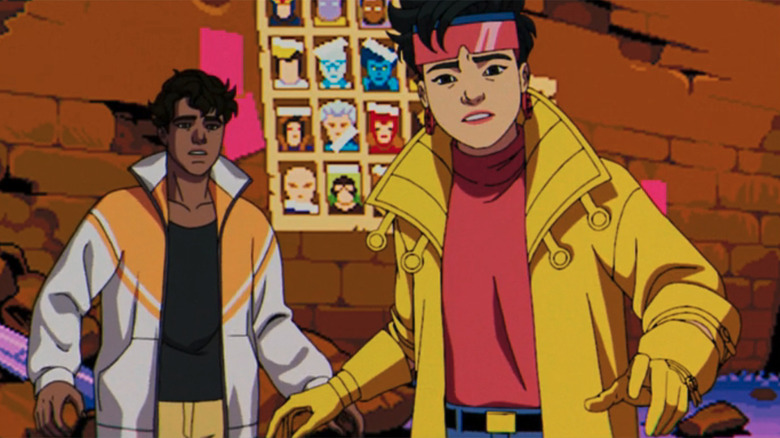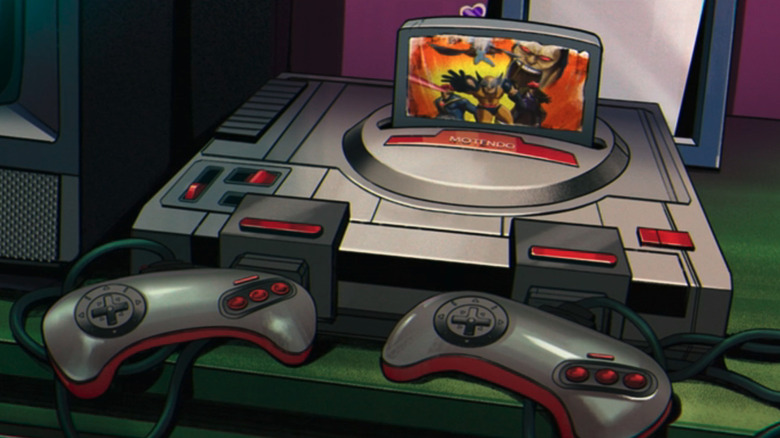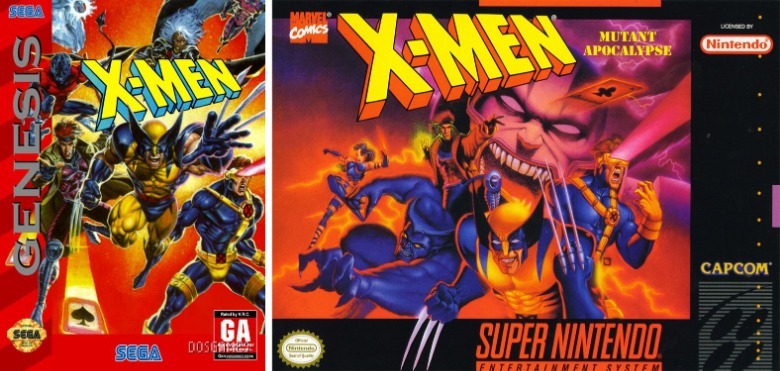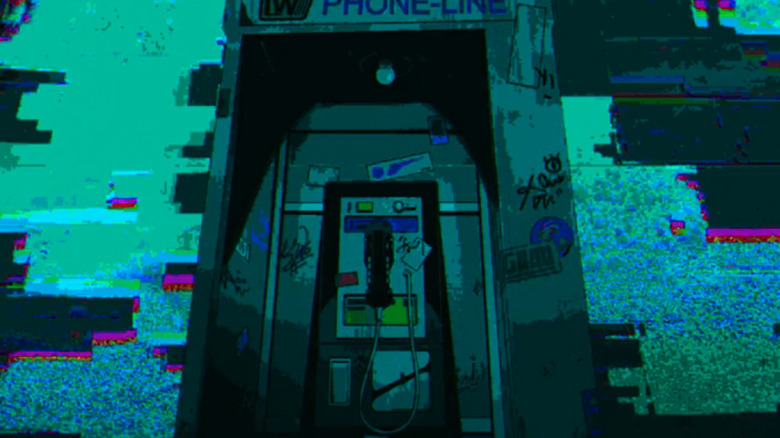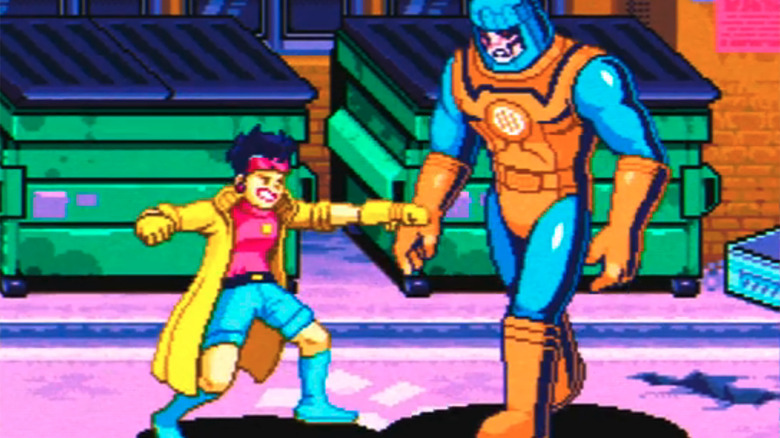X-Men '97 Episode 4 Throws It Back To Classic Marvel Video Games (And The Matrix)
Spoilers follow.
As the title indicates, "X-Men '97" is firmly set in the decade in which the original "X-Men: The Animated Series" debuted, the gloriously colorful '90s. So when Jubilee turns 18 in the fourth episode of the animate series revival, it only makes sense that she wants to take all of her mutant teammates to the arcade to celebrate. Unfortunately, the X-Men's new leader Magneto isn't having it, which prompts Jubilee to vent her frustrations to the newest X-Men recruit, Roberto da Costa (aka Sunspot), while hanging out in her room.
That's when Roberto notices that Jubilee really is a gamer, noticing a game console sitting next to the TV in her bedroom. But even though Jubilee genuinely believes that the only people who hate video games are bad at video games, that console doesn't belong to her. Instead, the Motendo is actually a sneaky trap created by the interdimensional villain Mojo that sucks Jubilee and Sunspot into a video game world that he will force them to fight through for the entertainment of millions across various dimensions. It's not dissimilar from a plot that Mojo put forth in "X-Men: The Animated Series," where he created a similar trap but turned the X-Men into stars of their own dangerous TV show.
What's great about the video game update of Mojo's nefarious plan is that it allows for plenty of Easter eggs and references to real X-Men video games from the '90s, as well as a nod to one of the most iconic movies from the decade, "The Matrix," which was just announced to be getting yet another sequel from "Cabin in the Woods" director Drew Goddard.
Game on
The very first reference to real X-Men video games comes when we actually get a close-up shot of the Motendo game system in Jubilee's room. Not only does it resemble one of the earlier versions of the 16-bit SEGA Genesis, but it has a game cartridge in place that takes a cue from the artwork of two different video games, as you can see below.
The image of the X-Men together engaged in battle, complete with Wolverine reaching out, comes from the original "X-Men" video game that was released in 1993. In that game, the action mostly took place in the Danger Room, where a virus has infected the training facility, making it lose control of safety limits in place to keep the X-Men from being killed. Of course, Magneto ends up being the source of the virus, and he must be defeated after the X-Men have made it through the unpredictable Danger Room.
However, there's another element of the artwork that comes from a different game. Behind the X-Men, there's that image of Apocalypse, with his eyes glowing red and his mouth gaping wide open. That comes from "X-Men: Mutant Apocalypse," where players control five of the X-Men across different levels on the Genosha island complex (if you need a refresher on that location, we've got you covered) where they must free captured mutants. Villains like the Queen Brood and Tusk are involved, but it's Apocalypse who's ultimately behind them. Of course, since this is an X-Men game, Magneto ends up being another primary threat, as he threatens to destroy Genosha from the space station Avalon.
That's just the beginning of the video game nods in this episode, but before that, a quick detour.
Enter The Matrix... er Mojoverse
When Jubilee and Sunspot suddenly awake after the game comes alive and ensnares them in cables, they find themselves fighting Sentinels in the middle of the city. After evading one of the giant robots and a group of armed bad guys from the Friends of Humanity, they notice a ringing phone booth down an alley, with digital artifacts glitching around it. Though Jubilee questions whether it's a trap, Sunspot doesn't hesitate to pick up the phone, which brings them into a video game-esque recreation of the old version of Genosha.
After Jubilee fills us in on her previous experience with Genosha, for those who might not remember or never experienced "X-Men: The Animated Series," she and Sunspot find themselves thrown into another gladiatorial combat scenario created by Mojo. Stuck in a video game based on Jubilee's own memories fighting alongside the X-Men, where Mojo hopes to tap into the nostalgia of their past (sound familiar?), they learn that if they die in the video game, they die in real life.
From the entrance into Mojo's game by way of the phone booth to the life-threatening framework of the game itself, this is all a nod to the influential box office smash "The Matrix." But this episode of "X-Men '97" is much more focused on the vintage video game throwbacks than more allusions to the groundbreaking sci-fi film from 1999.
Let's all go to the arcade
From 16-bit graphics to fighting different colored Sentinels to taking on the pterodactyl-like villain Sauron in Savage Land, the "Motendo" episode of "X-Men '97" takes its inspiration from the classic side-scrolling X-Men arcade game from 1992 to put Jubilee and Sunspot through the wringer before they end up in the final stage, Magneto's Asteroid-M base. There's even a little nod to the iconic "Days of Future Past" comic cover in 16-bit form. But ultimately, they end up in the digital innards of the game itself where they have to fight Mojo with a little help from a special guest, an alternate version of Jubilee, voiced by the original actor behind the character in "X-Men: The Animated Series."
It's all a clever and cool nod to the X-Men video games of the past, but it's also one that allows the series to provide a little bit of meta-commentary on the state of nostalgia by way of Mojo's maniacal plan. Of course, the fact that it comes within the framework of a series that is intentionally tapping into our nostalgia sucks the wind out of its sails a little bit. But there's no reason that a series can't give us substantial food for thought while also letting us snack on nostalgic junk food, too.
